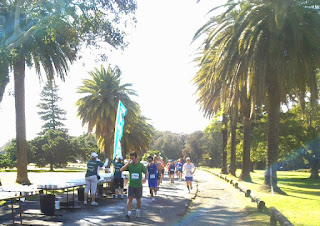 |
| Water Lily Pond |
It was designed as a grand park in the Victorian tradition with formal gardens, ponds, statues and wide avenues for the early Sydneysiders to drive their carriages around to ‘take the air’.
Centennial park is also vital for stormwater management and drainage of the local areas and to alleviate local flooding by its detention basin.
On 26th January 1888 Centennial Park was officially opened to celebrate the centenary of Eurpoean settlement in Australia, and this day is known and celebrated as Australia Day.
In 1825 convict labour was used to bore a 3.5 km subterranean aqueduct to gravity feed the pure water from the Lachlan Swamps (as it was then called) to Hyde Park in Sydney, underneath Oxford Street. This served as Sydney's main water supply until 1859. This aqueduct is now known as Busby's Bore and is one of the most important examples of early industrial development in Sydney.
Centennial Park is also a special place for me, and I often take my sketchbook down as there is never a shortage of things to sketch and record. The water reflections are wonderful, especially very early morning, just after the sun has risen. There is dew on the grass, the lakes are like mirrors and birds leave a wonderful pattern as they glide silently over the water.
Enjoy some of my sketches I have done of Centennial Park.
Within its diverse environment, almost 124 native bird species and 18 introduced species of both land and waterbirds have been recorded.
The Centennial Gates and some of the fantastic garden sculptures found in certain areas of the park.











